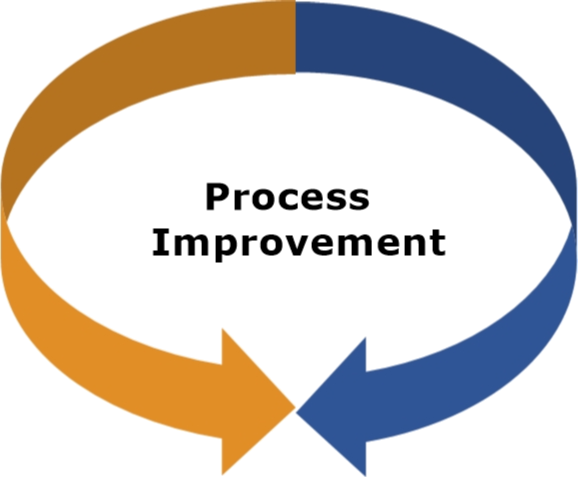Firm Management
The Path to Process Improvement
Lean Six Sigma is a proven method for systematically eliminating actions that do not add value. While the methodology originated in manufacturing, the core concepts are successfully applied in accounting firms as well. Firms that complete Lean Six ...
Sep. 26, 2016

The Path of Process Improvement
Lean Six Sigma is a proven method for systematically eliminating actions that do not add value. While the methodology originated in manufacturing, the core concepts are successfully applied in accounting firms as well. Firms that complete Lean Six Sigma process improvement projects have benefited from gains in efficiency, quality, profitability and the capacity to offer higher value services. However, this impactful and persistent change does not happen overnight. It is the result of following a path of process improvement.
Make the Decision to Change
The path to process improvement starts with realizing there is a need for change. For many firms the realization begins by assessing which symptoms of inefficiency are occurring in current processes. The most common symptoms include variation in process cycle times to clients, waiting for client data to filter in, variation in processes between employees, numerous and repeatable review notes, searching for client data, and excessive partner time in the details instead of on high-level activities. A common conclusion is that several (if not all) of these issues are present and impact firm productivity and profitability.
For some, the decision to change is confirmed based primarily on the assessment of process inefficiency. For others it may require hearing success stories from peers, gathering feedback from the team, and additional time for thoughtful consideration. Ultimately change will begin when it is clear that the benefits of reducing or eliminating the inefficiencies outweigh the perceived risk of process improvement.
Make a Plan for Improvement
After the decision to change is made, it is time to make a plan for improvement. However, a common misstep is to start generating change ideas without having a clear understanding of the issues, impacts and root causes. This results in “improving” one part of the process while creating new pain points in other areas.
The Lean Six Sigma D-M-A-I-C (Define, Measure, Analyze, Improve, Control) model is a proven plan for process improvement which includes these five steps: determine the specific process to improve (Define), map out the current process step by step (Measure), identify the areas of opportunity (Analyze), develop ideas and solutions to improve the process (Improve) and develop a plan to train, rollout and implement the new process (Control). This model provides a framework to ensure that the key areas of opportunity are identified and optimal solutions are implemented.
Establish Buy In
Buy-in is imperative for the firm-wide success of process improvement and it starts at the executive level as leadership sets the example by making a commitment to change and communicating it to the firm along with plan and timeline for improvements. In addition, leadership should seek involvement from other team members. Understanding the current process and areas of opportunity requires participation and insight from at least one representative at each level within the firm. A cross-functional process improvement team provides a well-informed perspective on the current state, areas of opportunity and potential solutions. It also helps to increase buy-in as people become invested through their participation. A positive change environment is established as team members feel valued and empowered with the opportunity to make a difference in the future of the firm.
Be Willing to Change
As the Lean Six Sigma process improvement initiative is underway, willingness to change is one of the most challenging obstacles. Support for the overall idea of change is easy – until it starts to affect specific parts of the process. Resistance surfaces as people want default to what is familiar. Personal preferences threaten to take priority over progress. Efforts can become stalled by SALY (same as last year) thinking, holding on to outdated traditions, and not wanting to disrupt those in who may be unwilling to change.
In order to move forward, the firm must work through the tension and discomfort of change by challenging the status quo by adopting a different way of thinking. Individuals must be willing to exchange personal preferences for consistent processes that are best for the firm. Leadership must develop a collaborative team environment encourages people to be personally invested and accountable. Everyone in the firm must make a commitment to finding ways to work better, increase value, and deliver exceptional client service.
Conclusion
The path to process improvement requires commitment, a proven plan, buy-in and a willingness to change and challenge the status quo. Continuous improvement will become part of the firm culture as people become more confident in using Lean Six Sigma as a framework to proactively drive and manage change. Although challenging at times, the efforts are rewarded with well-planned, high return changes that benefit the entire firm.
——-
Arianna Campbell is a consultant & Lean Six Sigma Black Belt at Boomer Consulting, Inc.
